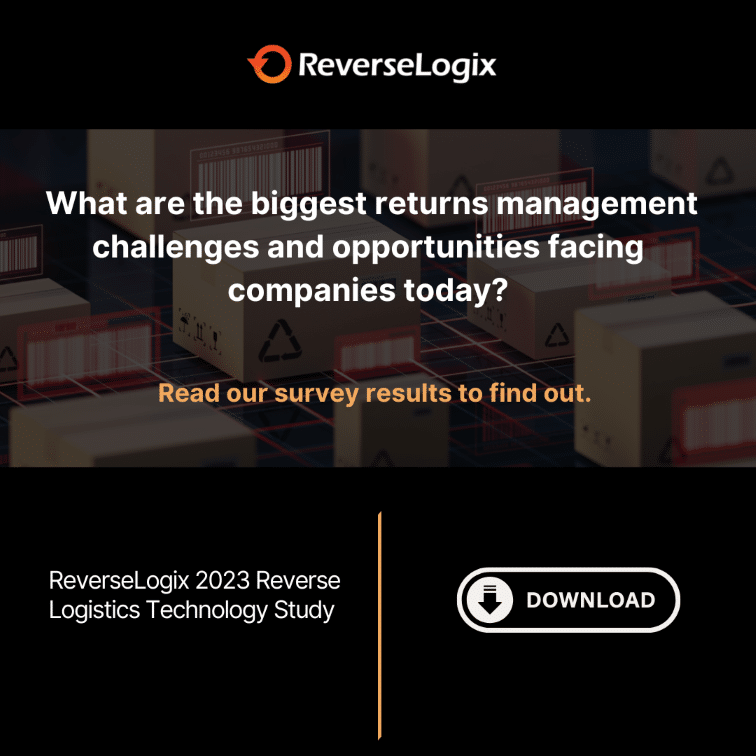Building a Customer-Centric Returns Experience: Key Factors for Success

Returns – a word that can evoke groans from retailers and shoppers alike. Historically seen as a headache-inducing hurdle in the world of commerce, returns have stealthily transformed into a potential goldmine for brands that understand the power of a customer-centric returns experience.
As the Chief Marketing Officer of ReverseLogix, a trailblazing player in the returns management arena, I’ve witnessed the evolution firsthand. Let’s delve into the fascinating realm of returns and uncover the key factors that spell success in this critical aspect of modern commerce.
The Returns Metamorphosis
Surprisingly, or maybe not for those paying attention, a jaw-dropping 97% of customers reveal that an effortless returns process would make them a loyal repeat buyer according to a study by WBR Insights.
Gone are the days when returns were mere afterthoughts, buried in the depths of complex policies and labyrinthine processes that resembled a frustrating puzzle. Picture the scene: customers, armed with products they no longer wanted or needed, ventured into a convoluted maze of paperwork, lengthy waits, and seemingly endless loops of customer service calls. It’s as if the world of returns was designed to test the limits of patience.
Companies struggled to grasp the pivotal role returns played in shaping customer loyalty, inadvertently sidelining an integral aspect of the customer experience. But now, the landscape has changed dramatically. The old ways, with their frustrating intricacies and detachment from customer satisfaction, have crumbled in the face of a new paradigm. Returns have emerged from the shadows of inconvenience to claim their rightful place as a linchpin of modern retail strategy.
Just like a single drop in a vast ocean creates ripples that travel far and wide, returns have a profound impact on how customers perceive and interact with a company. They are a pivotal touchpoint in the customer journey, and businesses that get them right can turn them into a strategic advantage.
The Power of Hassle-Free Returns
Today’s consumers do not want to have to jump through hoops to return an item. According to a study by Baymard Institute, 24% of online shoppers abandon their carts because of complicated returns policies.
In 2022, global fashion retailer Shein was criticized for its returns policy after customers reported having to pay return shipping fees and wait up to 6 weeks for refunds. This led to several complaints on social media and a drop in customer satisfaction.
Avoid the following when reassessing your returns processes:
- Complicated returns policies. Customers do not want to have to read through a long and confusing returns policy to figure out how to return an item. They want the policy to be clear and concise.
- Manual, paper-based returns process. Customers do not want to print out a returns form, complete it manually, and email it to your customer service team. They want a self-service, intelligent, online return process that gives them confidence in your brand and the returns experience.
- Long wait times on the phone. Customers do not want to have to spend hours on hold waiting to talk to a customer service representative about a return. They want to be able to return an item quickly and easily online or in-store.
- Shipping fees. Customers do not want to have to pay shipping fees to return an item. They want the retailer to cover the cost of shipping.
- Refund delays. Customers do not want to have to wait weeks or even months to get a refund for a returned item. They want the refund to be processed quickly and easily.
By avoiding these things, brands can create a positive returns experience that will keep customers coming back for more.

Embracing Flexibility and Choice
As the returns process continues to evolve, it’s important for companies to stay ahead of the curve. Offering customers flexibility and choice is one of the easiest ways to improve the experience from a customer’s point of view.
- Clear and concise returns policies: Customers want to be able to easily understand how to return an item. The returns policy should be clear and concise, and it should be easy to find on the company’s website or in the product packaging.
- Free returns: Customers want to be able to return items without having to pay for shipping. This is especially important for online retailers, as customers may be reluctant to purchase items if they know they will have to pay for shipping if they decide to return them.
- Quick refunds: Customers want to receive refunds quickly. They don’t want to have to wait weeks or even months to get their money back.
- Convenient return options: Customers want to be able to return items in a convenient way. They may want to be able to return them in-store, by mail, or through a drop-off location.
- Good customer service: Customers want to be kept informed regarding the status of their return and refund/credit, and if needed, to be able to contact customer service if they have any questions or problems with the returns process. They want to be able to get help quickly and easily.
Of course, this would be true in an ideal world. We do not live in an ideal world. So, the expectations of customers are not always viable. For example, offering free returns can be expensive for many brands, especially if they have a high volume of returns.
- The cost of shipping: Companies have to pay for the shipping costs of returned items. This can be a significant expense, especially if the retailer has a high volume of returns.
- The cost of processing refunds: You also have to pay for the cost of processing refunds. This includes the cost of credit card processing fees, as well as the cost of staff time to process refunds.
- The cost of lost inventory: If a company receives a returned item that is damaged or not in resalable condition, they may have to write off the cost of the item as a loss.
Additionally, the returns process can be complex and time-consuming, which can put a strain on customer service resources.
- Customers may have questions about the returns process. Brands need to have a clear and concise returns policy that is easy for customers to understand. They also need to provide an easy way to inform customers on the status of their returns and have customer service staff who are available to answer questions about the returns process.
- The returns process may require manual data entry. Companies may need to manually enter information about returned items, such as the reason for the return, the condition of the item, and the refund amount. This can be a time-consuming process, especially if the retailer has a high volume of returns.
- The returns process may involve multiple departments. The returns process may involve multiple departments within a company, such as customer service, shipping, and inventory management. This can create communication challenges and delays in the returns process.
Leveraging Technology for Seamless Returns
In today’s digital age, customers expect brands to offer a convenient and efficient returns process. By using a returns portal or other software solution, brands can automate the returns process and provide customers with real-time updates. This can save customers time and hassle, and it can also help companies to improve their efficiency and accuracy.
ReverseLogix is an ideal solution for brands, both B2C and B2B, looking to improve their returns process by automating the returns process, including tracking returns, processing refunds, and managing inventory. Our platform is also integrated with a variety of other systems, such as commerce platforms, CRM systems, and inventory management systems. This integration helps to create a seamless experience for customers, and it also helps brands to improve their efficiency and accuracy.
In addition to its automated features, ReverseLogix also offers several other benefits, such as:
- Real-time updates: ReverseLogix provides customers with real-time updates on the status of their returns. This helps customers to track their returns and to know when they can expect their refunds.
- Streamlined returns processing: Keep things moving and standardize decision-making from returns inspection. Improve efficiency and ensure products are effectively restocked, repaired and repurposed, every time.
- Reporting and analytics: ReverseLogix provides brands with reporting and analytics on their returns data. This data can be used to identify trends and to improve the returns process.
Amer Sports is a Finnish sports equipment company that owns brands such as Salomon, Arc’teryx, Atomic, and Wilson. The company uses our platform to automate its returns process and to improve its inventory accuracy. As a result, Amer Sports has seen a decrease in the number of returns, and an increase in the number of items that are sold as new.
As we traverse the digital landscape of commerce, it’s imperative to recognize technology’s transformative role in redefining operational paradigms. The returns process, once riddled with challenges, emerges as a testament to technology’s potential to reshape customer experiences and operational efficiency. Automation and real-time updates create a harmonious symphony, orchestrating an experience that resonates with customers long after the return is complete.
The Art of Reverse Logistics
In contemporary commerce, the concept of returns has evolved beyond a mere obligatory inconvenience. Instead, it has transformed into a strategic avenue for nurturing customer loyalty and shaping a constructive brand perception. As we draw this discourse to a conclusion, it is crucial to recognize that returns now constitute a pivotal platform where loyalty finds its expression and brand narratives are sculpted.
By adhering to the guidance imparted within this article, you will find yourself well-equipped to engineer a returns process that not only gratifies your customers but also lays the groundwork for sustained business interactions.
#returnsmanagement #customerexperience #retail #ecommerce #logistics #reverselogistics #customerservice #seamlessreturns #technology #retailtransformation
